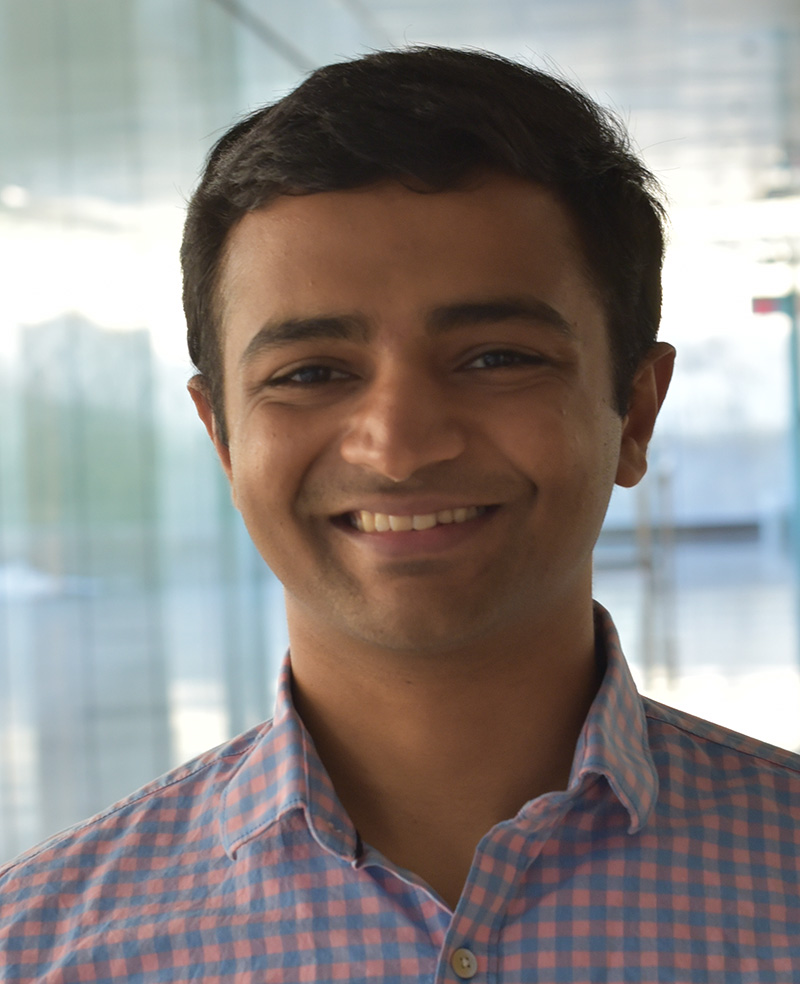Aditya Varma Muppala awarded Predoctoral Fellowship to support research impacting imaging systems

Aditya Varma Muppala received a Rackham Predoctoral Fellowship to support his research in imaging radars. His goal is to make high-resolution imaging radars that are 200 times cheaper and 100 times smaller than what is currently available, while at the same time ensuring they remain accessible, scalable, and portable. Applications for these devices range from the detection of concealed weapons to autonomous vehicle navigation.
“Imaging systems are ubiquitous in our world,” says Aditya, “from our complex mammalian eyes to selfie cameras on our smartphones – from the VLBI telescope system that recently took an image of a black hole to MRIs and X-rays. For me, the most fascinating systems among these are the ones that allow us to see things that are hidden from the naked eye.”
Aditya’s specialty is an extension of the sort of imaging radar found in airports, “familiar to most people who have been to an airport and stood inside a scanning chamber with their arms up,” he explained.
Imaging radars can see inside things without using hazardous ionizing radiation. This means they can be safely used for concealed weapons detection in schools and large public events; they can be used for navigation in times of low to no visibility in autonomous vehicles; and they can be used to find missing persons trapped in burning buildings or hidden in post-earthquake disaster areas.
“Like any mature technology,” explained Aditya, “in order for imaging radars to be integrated into the infrastructure of our future more widely, they must be cost-effective, compact and scalable.”
Aditya is developing new technologies that will come together into a single system. He has already developed a recursive deconvolution algorithm to maintain image quality while reducing the number of antenna array elements by a factor of 200. This technique was tested in autonomous driving situations and resulted in the elimination of false alarms while detecting previously missed targets.
In another project, he developed a new technique for rapidly generating a large synthetic aperture with a single antenna element using dynamic reflectors. This technique reduced the cost of the high resolution millimeter wave imaging system by 100x. A patent has been filed on this technology. And as a final example of his multifaceted research, he is currently implementing these high-resolution imaging systems on silicon integrated circuits to reduce the cost and size by another order of magnitude.
With their high-speed, high-resolution 4-D polarimetric SAR imaging system, the first of its kind, they are able to detect concealed weapons without imaging the underlying body. This revolutionary and innovative approach will make it possible to not only do quick detection of weapons, it could also be used in autonomous vehicles, medical imaging, cancer diagnosis, and search and rescue operations.
When all the facets of his research come together, which involve signal processing, antenna design, manufacturing and integrated circuits he will have an unprecedented imaging radar, operating at 200 – 300 GHz, that is extremely small, inexpensive, and scalable, while offering real-time processing.
Aditya has authored 14 publications, with eight as first author. He received his undergraduate degree at Vellore Institute of Technology in India, and his master’s degrees in ECE and Mathematics from Michigan.
Aditya’s proposed dissertation title is “High-resolution Millimeter-wave Imaging Radars for a Safe and Equitable Future.” He is advised by Professors Kamal Sarabandi and Ehsan Afshari.
 MENU
MENU 
